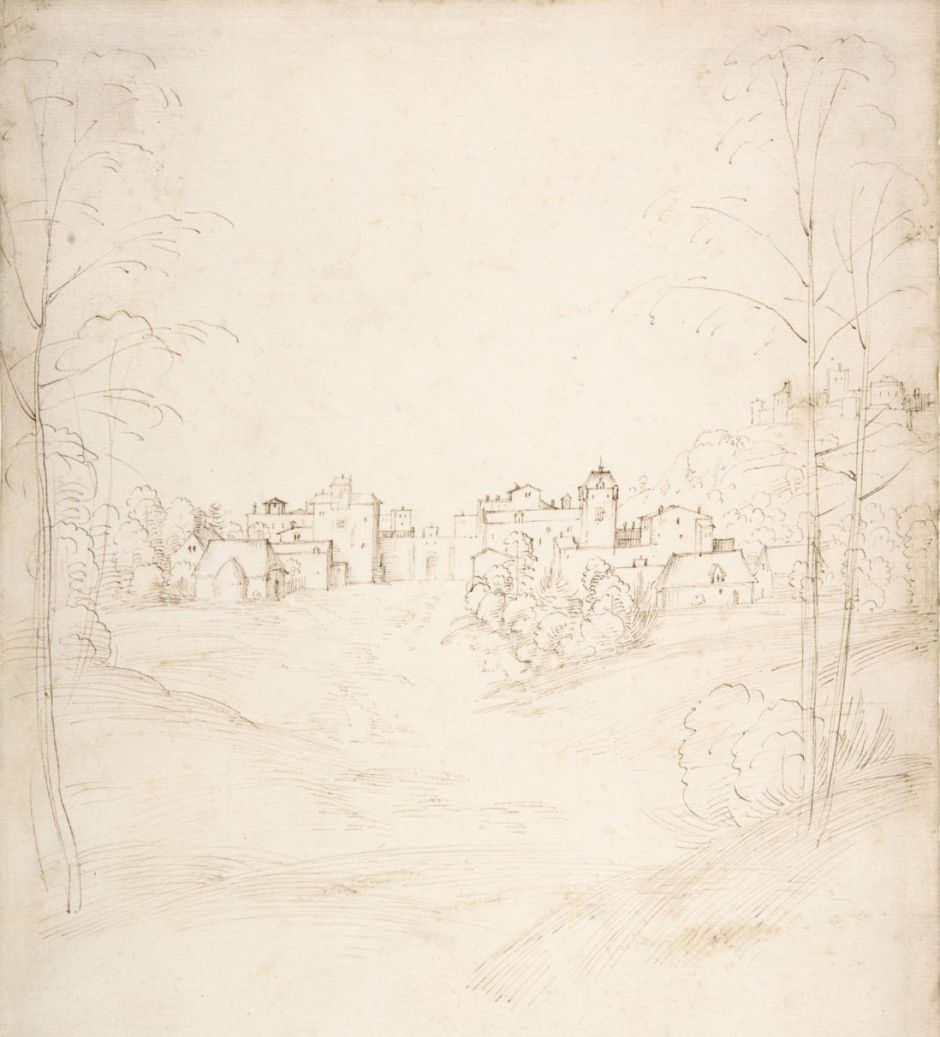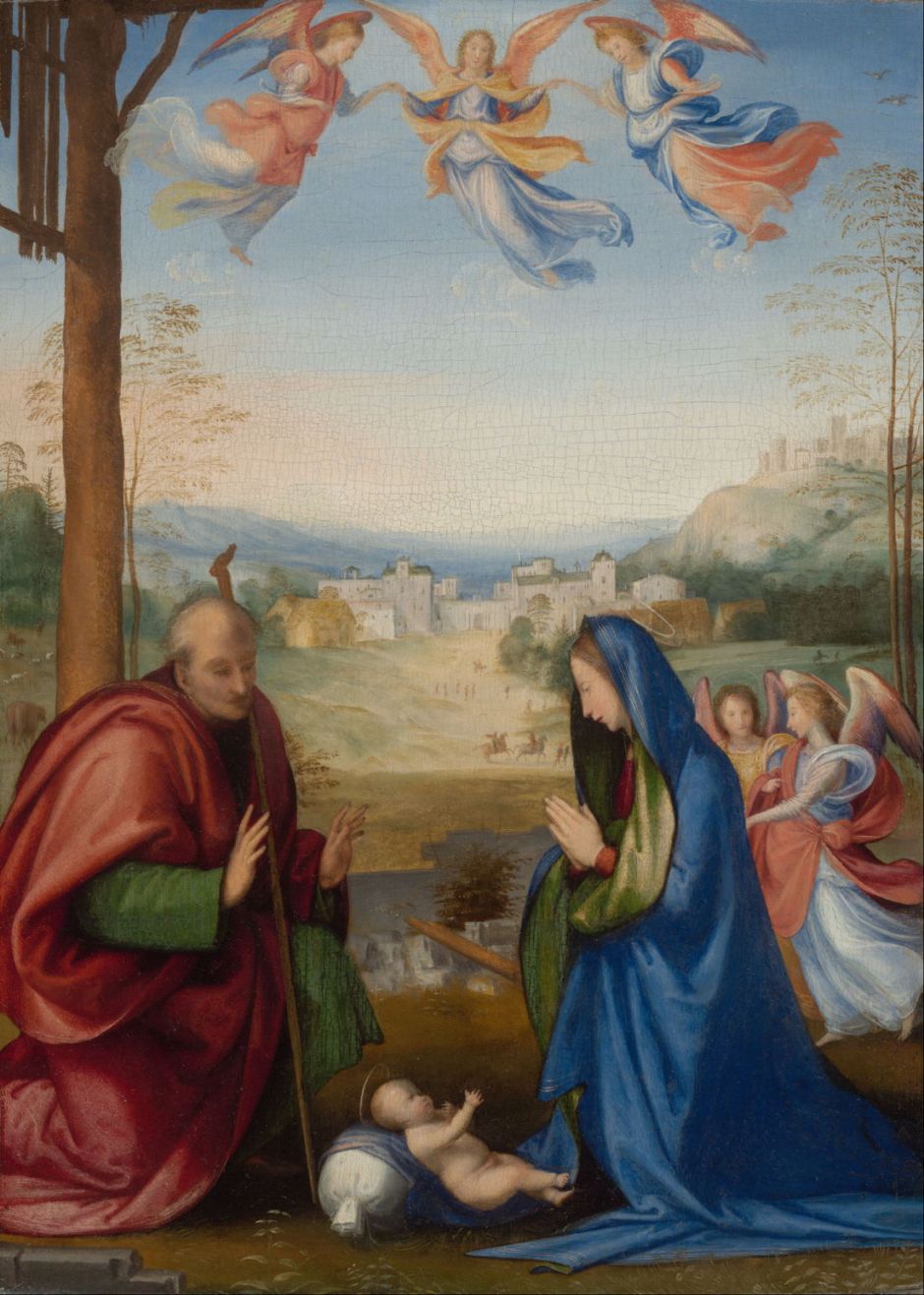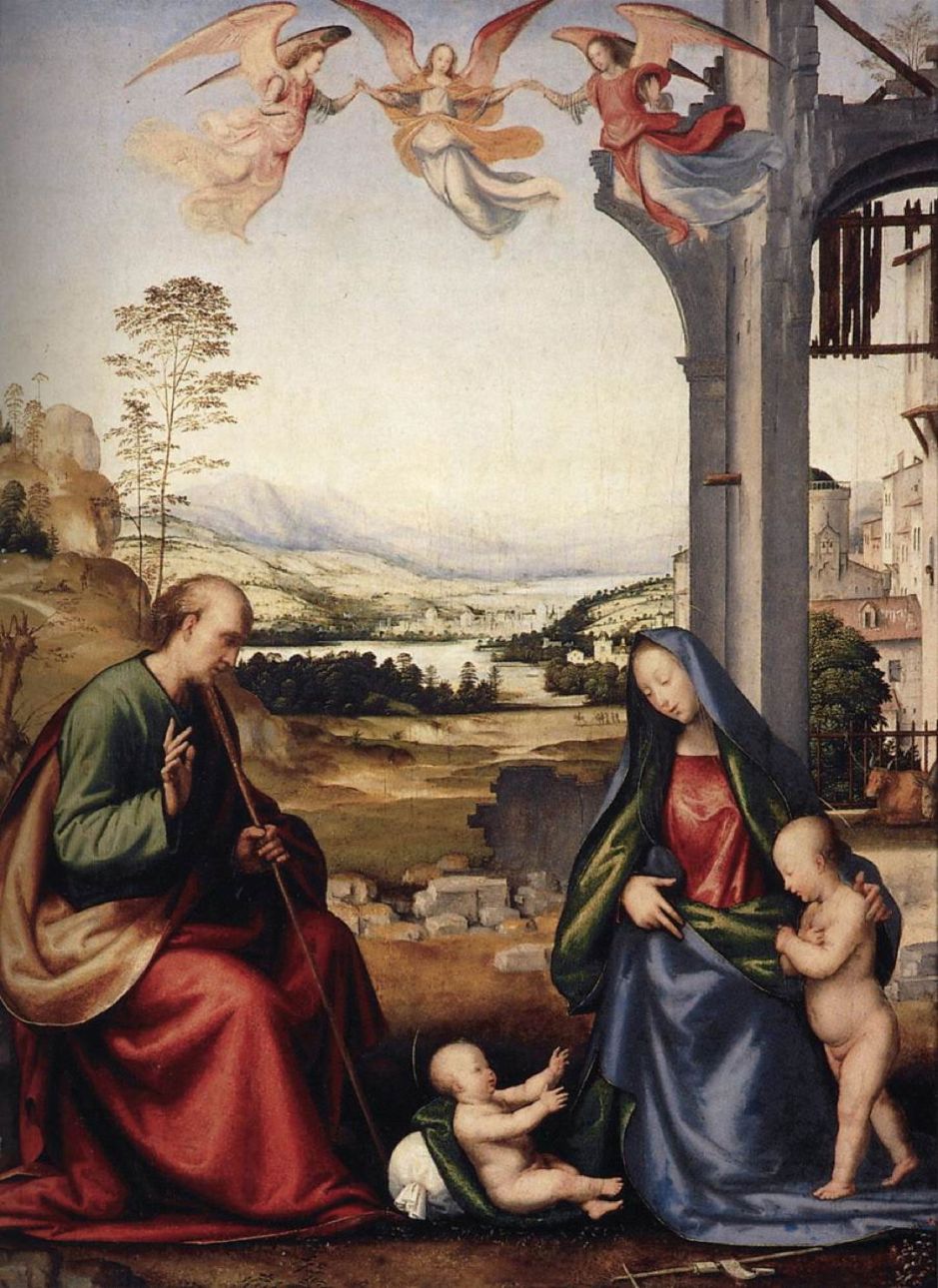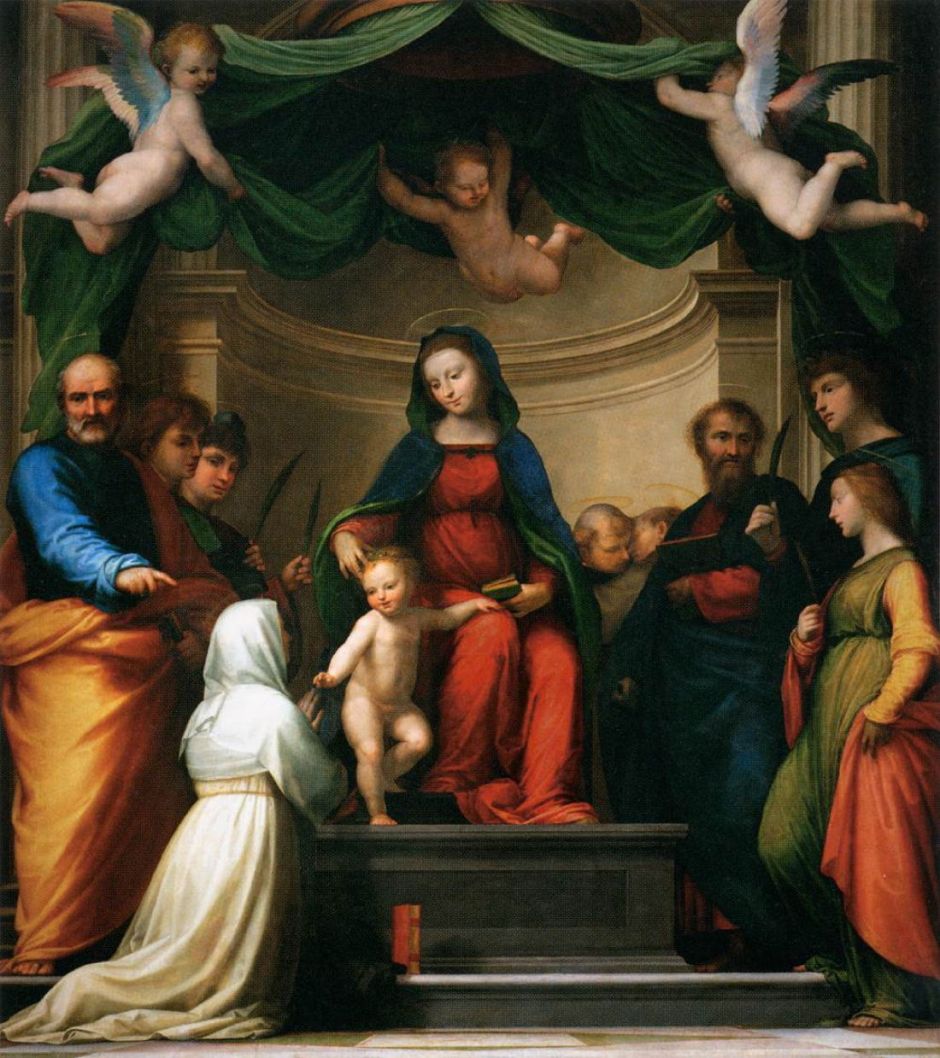When he became swept up in the religious fervour which accompanied the ministry and martyrdom of Savonarola, Baccio della Porta entered a monastery, became Fra Bartolomeo, and stopped painting completely. It wasn’t until 1504 that he returned to the workshop, and that was still in the San Marco monastery.
That break in his art gave him a chance to reflect on the changes which had been taking place in Italian Renaissance painting, such as the sfumato and smoothness achieved by Leonardo da Vinci. Bartolomeo developed his style and technique further, without sacrificing the purity of his forms, simplicity of composition, or his brilliant rendering of textiles.

Bartolomeo was also innovative in the landscape vignettes which he incorporated into his finished paintings. He seems to have drawn A Small Town on the Crest of a Slope in front of the motif, as a study for its appearance in the background of The Nativity (below), at some time in the years 1504-07.
This is a technique believed to have been used extensively by the great landscape painters of a century later, Nicolas Poussin and Claude Lorrain, and gave Bartolomeo’s landscape passages an air of authenticity. This contrasts with the idealised or dramatised landscapes more usually seen in backgrounds of paintings from the southern Renaissance.

The Nativity (1504-07) uses that landscape drawing for its background. Bartolomeo has populated the middle distance to add interest, and in the foreground is a simple nativity scene based on his fine tondo Adoration of the Child from 1499. He has also added decoration of angels at the right, and in the heavens above.

Bartolomeo’s slightly later The Holy Family with St John the Baptist (1506-07) is a variation with the addition of the older infant Saint John, against a completely different background. Immediately behind the group is a ruined building which provides repoussoir, and leads at the right to the distant ox and ass, and an Italianate town. The distant landscape appears to have been based on another drawing, although I have been unable to locate that.

Landscape (Wooded Approach to a Town) is another pen and ink landscape drawing from about 1508, with sketched-in figures including a horse and rider, and a heavily-laden wagon approaching the bridge in the centre. I don’t know whether this was developed into a finished painting.
By 1508, Bartolomeo had re-established and advanced his reputation, and was considered the leading painter in Florence at that time. The young Raphael visited him; the younger artist helped Bartolomeo improve his perspective projection, and Raphael was able to improve his rendering of fabrics and clothing. Still in pursuit of the latest techniques, Bartolomeo visited Venice that year.

The Rest on the Flight into Egypt with St. John the Baptist, from about 1509, shows the advance in Bartolomeo’s modelling of faces and flesh, in particular. Joseph’s head is not shown as a stereotype, bald with a white beard, but appears to have been painted from a model, perhaps another friar, and uses extensive sfumato to soften its shadows. His hair is also far more realistic, as is that of Mary.
In the distance at the right is a couple, dressed identically, undertaking the same journey, which is most probably Mary and Joseph too, making this multiplex narrative. The trunk of the palm at the left is more hirsute and less crisp than in his previous painting of the Flight into Egypt in about 1500.

God the Father with Saints Catherine of Siena and Mary Magdalen (1509) shows far less of its landscape background, and concentrates on the three figures, with their finely-rendered garments. Mary Madgalen(e) is shown at the left, holding her container of myrrh, as the myrrhbearer. Saint Catherine wears her Dominican tertiaries’ habit, and in front of her are a white lily, book, and a sprig from the crown of thorns.
God the Father is shown bearing the Greek capitals alpha and omega, and the winged cherubs hold open a scroll with the words divinus amor extasim facit, a quotation from Dionysius the Areopagite meaning divine love produces ecstasy, a reference to the ‘mystical marriage’ of Catherine, and Bartolomeo’s own mystical beliefs.
There are two additional inscriptions, barely visible in this image, to the right of Mary’s neck (nostra conversatio in coelis est = our conversation is in heaven), and to the left of Catherine’s eyes (amore langueo = with love, a quotation from the Song of Songs).

According to the writings of Raymond of Capua, when she was twenty-one, Saint Catherine had a mystical experience in which she underwent marriage to Jesus. She was also told to return to minister to the sick and the poor. Bartolomeo’s painting of The Marriage of St Catherine of Siena (1511) shows the saint, this time in secular clothing, both holding her book, and with a book set in front of her.

Ferry Carondelet is the sponsor shown in Bartolomeo’s Mary with Saints and Sponsor, dating from 1511-12. Carondelet, who lived from 1473 to 1528, was a distinguised Habsburg diplomat, who advised Margaret of Austria among others. At the time of this painting, he had recently been appointed Papal Legate to the court of Emperor Maximilian, and in 1515 he became abbot of the abbey in Montbenoît, in the far east of France.
The most obvious of the saints shown is Sebastian, impaled with arrows. Behind him is Stephen, with John the Baptist on his knees. At the far right, in his Cistercian white habit is Bernard of Clairvaux, and behind him is Saint Anthony. The sponsor is kneeling, prominent in his red vestments.
In the landscape vignette seen through the open doors is a baptism in progress, perhaps that of Christ himself.

Pietà (1511-12) is the earlier of two similar scenes showing the two Marys and others lamenting the death of Christ, after his body had been taken down from the cross (the deposition). This appears to be only part of this particular painting, which shows in the right background the crucifixion scene on Calvary, with the central cross now empty.

The Mystical Marriage of Saint Catherine (1512) is a later variation on the theme of Saint Catherine of Siena’s mystical experience, which sadly lacks the earlier painting’s vignette landscape.
The next article will conclude Fra Bartolomeo’s biography, with a selection of his paintings from the final five years of his life.
Reference

